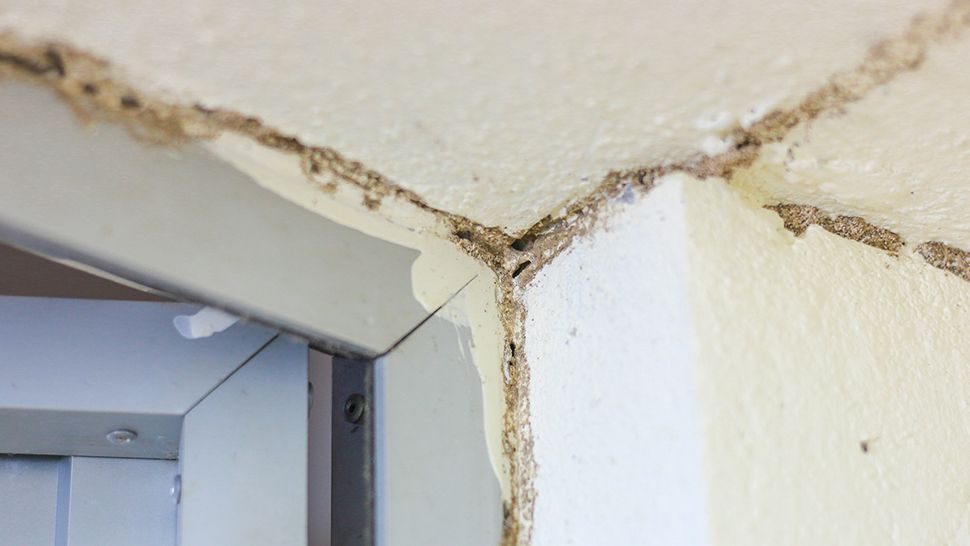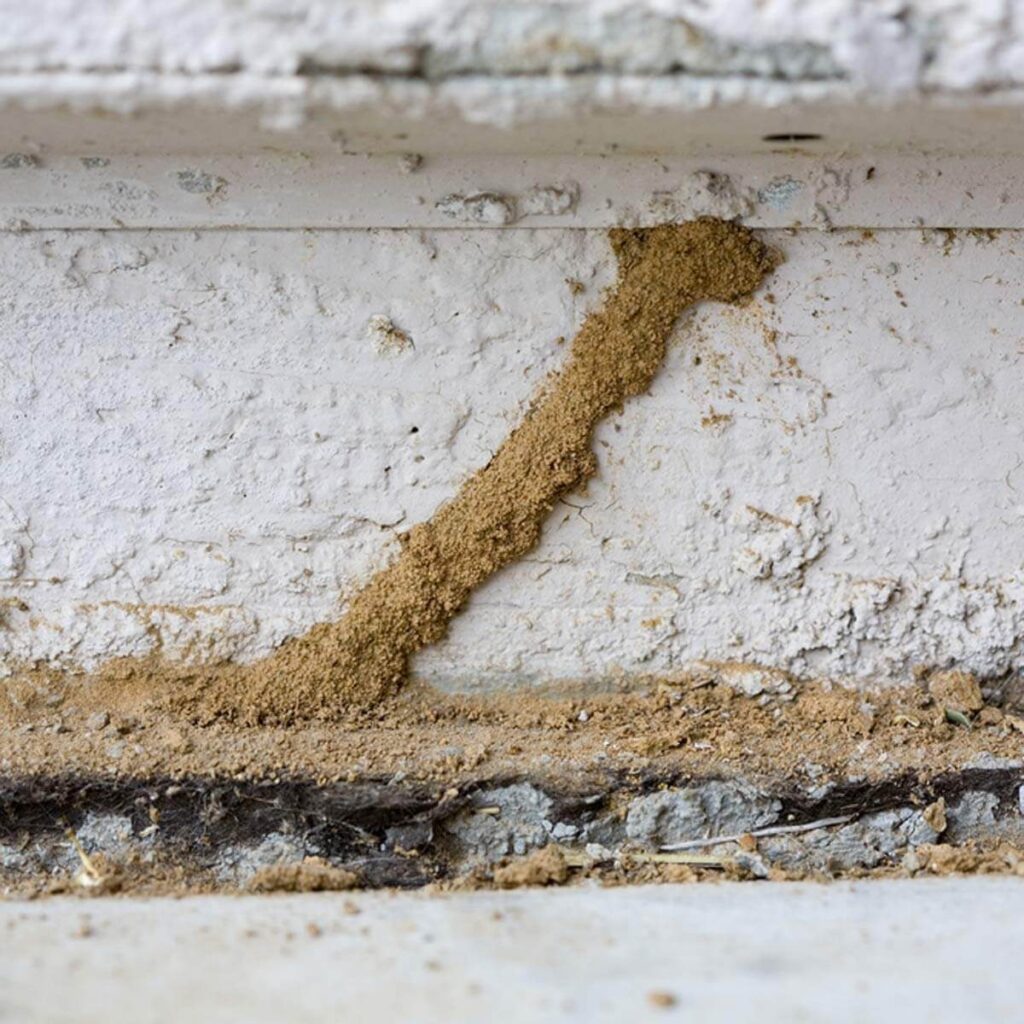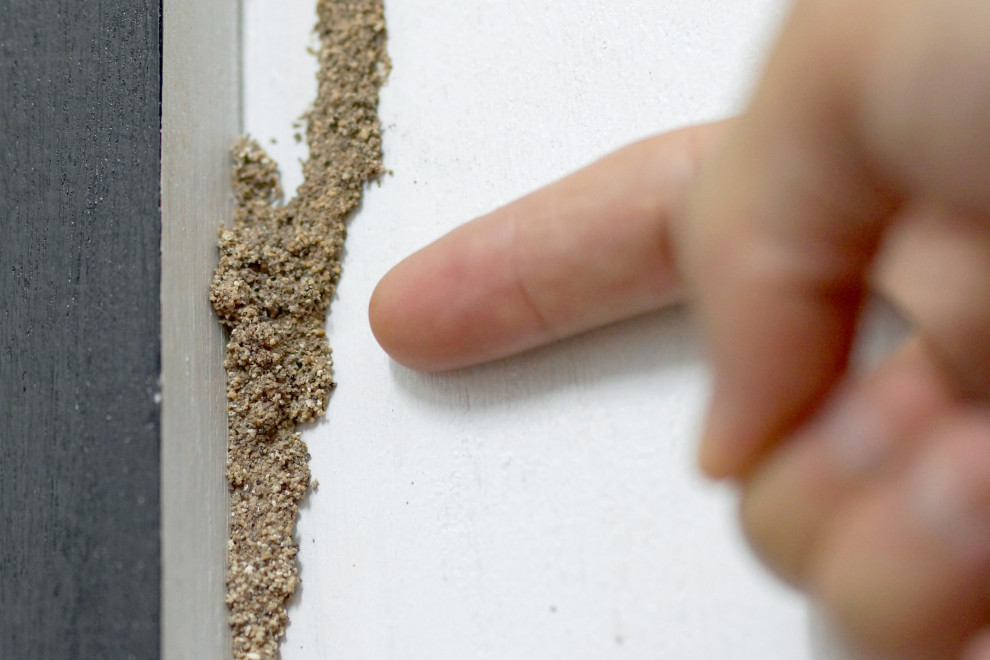Termites enter homes through cracks, gaps near the foundation, exposed wood, or soil-to-wood contact. They are drawn to moisture and cellulose materials like wood, gaining access through leaks, damp areas, or decaying wood.
In this article, I tried to cover all the Possible ways for the Termites to enter your House. So, let’s get started!
How Termites Enter Your Home
A. Entry points and vulnerabilities in a house
Termites can find their way into your home through various entry points and exploit vulnerabilities in your House’s structure. Here’s what you need to know:
Cracks in Foundation: Termites are incredibly tiny and can infiltrate your home through even the smallest cracks in your foundation.
Example: A crack as narrow as 1/64th of an inch can be an entry point for termites.
Gaps Around Plumbing and Wiring: Termites are adept at slipping through gaps around plumbing and electrical wiring, using these openings as pathways.
Example: Gaps around pipes or wires can easily let termites into your home.
Wood-to-Ground Contact: When wooden parts of your House come into direct contact with the soil, termites can construct mud tunnels to reach and feast on that wood.
Example: A wooden porch or deck that touches the ground can become a highway for termites.
B. Common signs of termite infestation

Being able to recognize the signs of a termite infestation is crucial. Look out for these telltale indicators:
Mud Tubes: Termites create mud tubes on walls or foundations, serving as protected highways.
Example: If you notice narrow, mud-like tunnels climbing your home’s foundation, it’s likely the work of termites.
Wood Damage: Termites hollow out or weaken wood. Tap on wood surfaces—if it sounds hollow or crumbles easily, termites may be to blame.
Example: When you tap a termite-infested wooden beam, it might produce a hollow, papery sound.
Discarded Wings: You may discover discarded wings around your home after a termite swarm. Termites shed their wings when they establish a new colony.
Example: If you find tiny, translucent wings around your windowsills, it could signal a recent termite swarm.
C. Routes of termite entry and factors that attract them
Termites are drawn to specific conditions that make your home more appealing to them. Consider these factors:
Moisture: Termites thrive in damp environments. Leaky pipes or poor drainage can create the moisture they need.
Example: A leaky roof that goes unnoticed can result in the damp conditions termites love.
Wooden Debris: Piles of firewood, lumber, or wooden debris near your home can be a feast for termites.
Example: Storing firewood near your house can attract termites closer to your home.
Landscaping: Planting trees or shrubs too close to your house can make it easy for termites to get to your home.
Example: A shrub planted too close to your foundation can become a termite pathway.
Prevention and Protection of Your House from Termites
A. Regular inspection and early detection
Annual Checkups: Schedule annual termite inspections by a professional to catch infestations early.
Example: An annual inspection can cost around $100 to $300, depending on your home’s location and size.
DIY Inspections: Inspect your home regularly for termite signs, such as mud tubes or damaged wood, to find problems early.
Example: A basic flashlight for inspections can cost as little as $10, making it an affordable DIY tool.
B. Addressing potential vulnerabilities in and around the House
Sealing Cracks: Seal cracks and gaps in your foundation, walls, and utility entry points to keep termites out.
Example: A tube of high-quality caulk for sealing cracks can cost around $5 to $10.
Proper Drainage: Maintain proper drainage around your home to prevent excess moisture.
Example: Repairing a gutter or downspout can cost around $150 to $350.
No Wood-to-Soil Contact: Elevate wooden structures and keep them away from direct soil contact to reduce the risk of termite infestation.
Example: Building a wooden deck on concrete footings instead of directly on the ground can help prevent termite access.
C. Implementing preventive measures and termite control strategies
Termite Barriers: Consider installing physical or chemical termite barriers around your home’s perimeter for added protection.
Example: Professional termite barrier installation costs vary by location and property size, typically ranging from $1,000 to $3,000.
Regular Pest Control: Engage in regular pest control treatments to deter termites and other pests.
Example: Quarterly pest control service can cost around $300 to $600 per year, depending on your location and the provider.
Termite-Resistant Materials: When building or renovating, opt for termite-resistant building materials.
Example: The cost difference between termite-resistant and regular building materials can vary, but it’s an investment in long-term protection.
DIY Solutions and Professional Assistance for Preventing termites from your House

A. Do-it-yourself methods for termite prevention and treatment
For termite prevention and treatment, you can try DIY termite-preventive methods.
Soil Treatment: You can purchase liquid termiticides and apply them around the perimeter of your home. This creates a barrier that deters termites from entering.
Example: If you have a 2,000-square-foot home, the average cost of DIY soil treatment might range from $100 to $300 for materials. The application process typically takes a few hours.
Wood Treatment: Consider treating wooden structures like decks or fences with borate-based products. These products can be painted or sprayed onto the wood to make it less attractive to termites.
Example: Treating a small deck (200 square feet) with borate-based products might cost around $50 to $100 in materials, and it usually takes a day to complete the application.
Moisture Control: Fix any water leaks or drainage issues around your home promptly. Termites are attracted to moisture, so keeping things dry can help prevent infestations.
Example: Fixing a leaky pipe might cost around $150 to $350, depending on the extent of the damage and whether you hire a plumber.
Regular Inspections: Regularly check your home for termite signs like mud tubes or damaged wood. Early detection is vital for successful DIY treatment. Regularly check your home for termite signs like mud tubes or damaged wood. Early detection is vital for successful DIY treatment.
Example: A basic flashlight for inspections can cost as little as $10, making it an affordable DIY tool for checking your home regularly.
B. Benefits of hiring professional pest control services
Hiring professional pest control services can offer several advantages:
Expertise: Pest control professionals have specialized training and experience in identifying termite infestations accurately. They know where to look and how to treat the problem effectively.
Example: The average cost of a professional termite inspection can range from $75 to $150, depending on your location and the size of your home.
Specialized Treatment: Professionals use specialized equipment and chemicals that are often more potent and effective than what’s available to consumers.
Example: The cost of professional termite treatment varies widely but may range from $500 to $2,500 or more, depending on factors like the size of your home and the severity of the infestation.
Preventative Measures: Pest control services offer ongoing preventative treatments to keep termites away long-term, which can save you money and stress in the future.
Example: Regular preventative treatments cost around $200 to $500 per year, depending on your location and the service provider.
Time and Convenience: Hiring professionals saves you time and effort. They handle the entire process, from inspection to treatment, leaving you with peace of mind.
For example, DIY termite treatments can take several hours or even days, whereas professionals can often complete the job more efficiently in a matter of hours.
Guaranteed Results: Many pest control companies offer warranties and guarantees. If termites return after treatment, they will come back to address the issue at no extra cost.
Example: Some pest control companies provide a one-year warranty on their termite treatments, ensuring you get value for your investment.
In summary, while DIY methods can be cost-effective for minor termite issues, hiring professional pest control services offers expertise, specialized treatment, preventative measures, convenience, and guaranteed results.
Depending on the severity of your termite problem and your budget, you can choose the approach that suits you best to protect your home from these destructive pests.
FAQs
Do termites fly into houses?
Some termites with winged reproductive forms can fly into houses, typically during swarming season, looking for new places to establish colonies.
Can termites come up through the floor?
Yes, termites can come up through the floor if they have established mud tubes or tunnels connecting their nest in the soil to the wooden structures within your home.
Can termites infest a house from neighboring trees or shrubs?
Yes, Termites can infest a house from nearby trees or shrubs if their nests are close to the building, and they find access points through roots or other structural weaknesses.
Do termites enter through the roof?
No, termites usually do not enter through the roof but can infest roof structures if they have already established a presence in the walls, foundation, or other areas of the House.
Can termites come in through mulch or landscaping?
Yes, termites can enter through mulch or landscaping if it is in direct contact with your home’s foundation, providing them with a path to access your structure.
Can termites enter through concrete foundations?
No, termites cannot enter through the concrete foundation because of their solidity, but they can enter through cracks or gaps in the concrete foundation.
Do termites enter through wood siding?
Yes, termites can enter through wood siding if it is in direct contact with the soil or if gaps or cracks allow access.
Can termites enter a home through cardboard boxes or firewood?
Yes, termites can infest cardboard boxes or firewood stored in your home, and if the wood is infested, it can spread further within your residence.
Conclusion
Termites can enter your House through various ways, such as through direct contact with wood, cracks in foundations, or even through infested furniture.
It’s crucial to emphasize the importance of proactive termite control for preserving the integrity of homes.
Implementing preventive measures like regular inspections, treating wood structures, and maintaining proper ventilation can help in the early detection and effective management of termite infestations.
By being proactive, homeowners can ensure the long-term preservation of their homes and prevent potential damage caused by termites.

